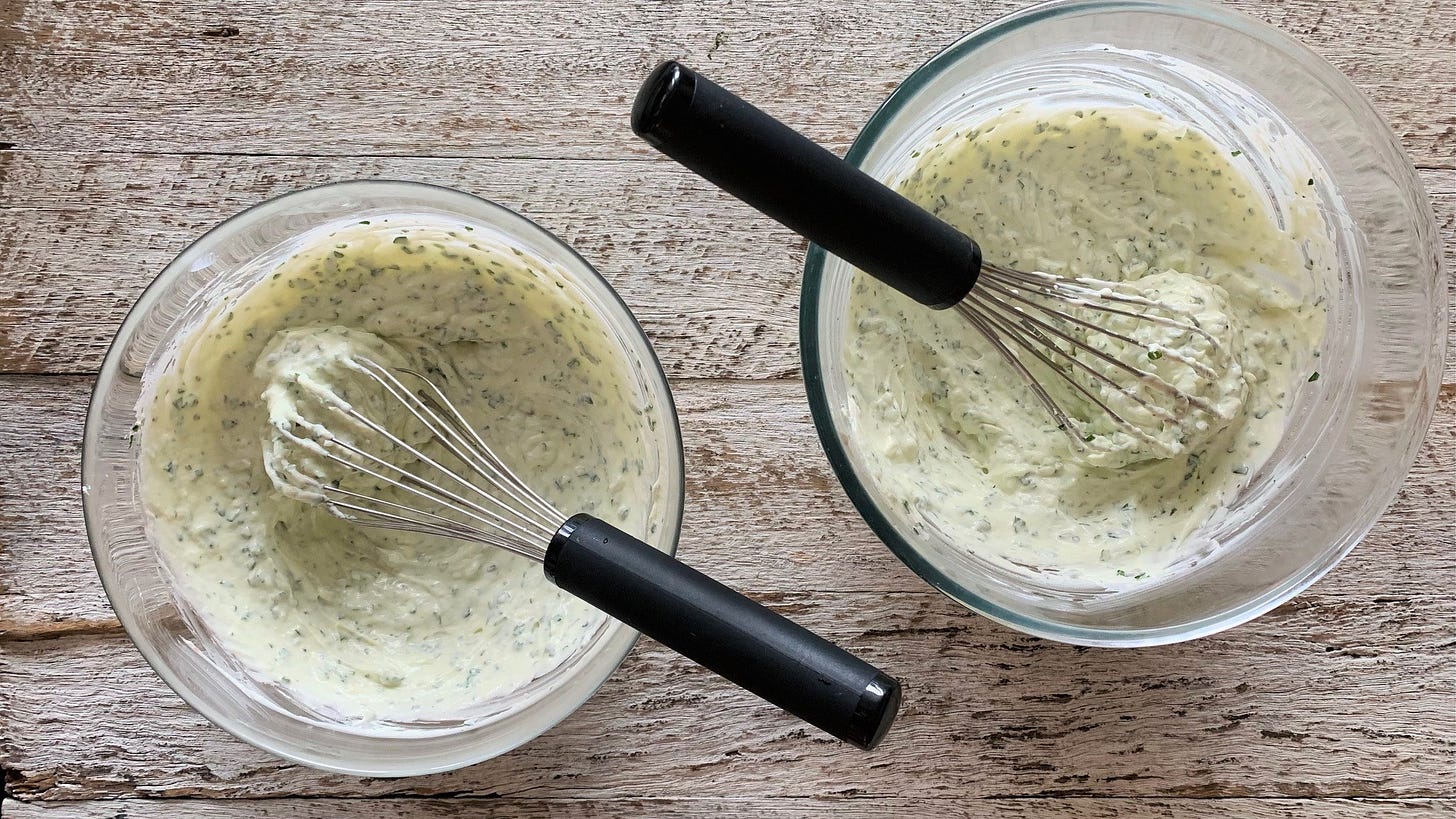BE YOUR OWN BISTRO
You don’t need a red-checked tablecloth to recapture the magic of the French bistro at home. Just a baguette and a pot of cervelle de canut.
Give me a black-vested French waiter with tired feet, gargantuan wooden drawers filled with heavy silver cutlery, boards of charcuterie fringed with glistening gelée, a jar of cornichons, some tough country saucisson and a pichet of Beaujolais, and I’m as happy as a clam.
We’re lucky to have beautiful bistros in Australia that are either faithful to tradition, or who reinvent it in their own style. France-Soir in Melbourne, I salute you. Bistro 916 in Sydney, you have stolen my heart, sautéed it in butter and sent it to the table with seaweed-flecked frites. Bistro Moncur, Bistro Rex, Porcine. Entrecote, Bistro Guillaume, French Saloon, Bistro Gitan, Bistro d’Orsay. The yet-to-open Loulou from Sebastien Lutaud in Sydney’s Milson’s Point, bienvenue!
And we have memories, of bistros past to fall back on, also. Of the towering pyramids of pommes frites at La Poule Au Pot in Paris. The duck terrine and boudin Basque at Chez Vieille. The brandade de morue and croque monsieur at Lazare. Anything at all, from L’Ami Jean.
But we forget that what we call bistro food was country food. It’s nothing more than regional specialties from all over France that moved to the city for greater opportunities: lamb navarin, beef daube, coq au vin, confit de canard, quiche Lorraine, boudin noir, blanquette de veau, saucisson Lyonnais en brioche, pork rillettes, pot au feu, cassoulet and beignets de pomme.
And the best thing? We can bring all that bistro magic home with little more than a candle-lit table, a baguette, and a pot of light, tangy, creamy, cheesy, very Frenchy cervelle de canut.
Cervelle de canut
This is one of those transportive dishes, in that it whisks you away to Lyon, a belly-button of a city deep in the stomach of France. The name actually means silk-weaver’s brains, although no brains are involved in the ingredients – and nor are they required in the making of it, which is très, très simple.
So why the name? It’s not clear, but in the nineteenth century Lyon was a famous for its silk production, and the canuts – silk weavers – would head for the Lyonnais bouchons (bistros) for a morning meal, after hours of work. Perhaps this is what they ate, before going back to work.
Some tips:
It’s pronounced ser-vell de canoo.
In France, it’s made with mild, tangy, fresh fromage blanc, basically a curd. Use goat’s curd or even a light, fresh, un-ashed goat cheese, lightened with fresh ricotta or yoghurt.
French chef Alain Ducasse adds tarragon to the cervelle de canut at his Aux Lyonnais bistro in Paris, which I think would be amazing. He also suggests walnut oil.
Michel and Albert Roux’s recipe in their book, French Country Cooking says, rather snippily, “on no account add garlic – we are not in Provence!” I add a tiny touch, just for the whiff.
HOW TO SERVE
It’s perfect for picnics and weekend lunches, and with drinks at sundown.
If you can find a good, slender, crusty baguette ( ficelle, really), not those giant anaconda things, then tear it apart in your hands or slice. No need to toast unless it’s stale.
Bistro 916 in Sydney serve cervelle de canut with crumbed fried sardines and radishes, which is cute. Elsewhere, I’ve seen it served with hot boiled or steamed potatoes.
Crudité would also be good, of radish, cucumber, carrot, crisp cos leaves.
Slap a spoonful on a grilled steak, or serve with a Greek salad; it goes really well with things like tomatoes, red onion, crisp green leaves and olives.
CERVELLE DE CANUT
Herby, creamy and tangy goat’s curd, lightened here with yoghurt or ricotta. Left-overs will keep in the fridge for 3 or 4 days.
Serves 4 as a snack
200 g goat curd or soft, fresh goat cheese
125 g natural yoghurt or fresh ricotta
1 tsp finely grated shallot or red onion
Half small garlic clove, finely grated
2 tbsp finely snipped chives
1 tbsp finely chopped parsley
1 tsp finely chopped thyme leaves
Half tsp sea salt, pinch of cracked black pepper
1 tbsp extra virgin olive oil or French nut oil
1 tsp white or red wine vinegar
1 baguette for serving
Whisk the goat curd and yoghurt or ricotta together with the shallot and garlic until smooth.
Whisk in the chives, parsley, thyme, sea salt and pepper.
Whisk in the olive oil and vinegar, until it feels light and creamy.
Transfer to a serving bowl and top with remaining chives.
Refrigerate for an hour or two – it will thicken to the point that it is spreadable with a knife.
Serve with baguette, sliced or torn, plain or toasted.
Thanks for reading! And liking, commenting, subscribing, or sharing. Special thanks to my right-hand man, Terry Durack, for opening the tubs of goat’s curd; damn, they’re tricky.
I would like to acknowledge the traditional owners of the lands and waters upon which I work, live, cook and play; the Gadigal people of the Eora Nation. I fully support the Uluru Statement from the Heart, and for an Aboriginal and Torres Strait Islander voice to be enshrined in Australia’s Constitution.




Jill, I love the fact that you consistently post simple, delicious, fun recipes. Your choices are brilliant, don’t follow the ‘mob’ and are much enjoyed. Thank you